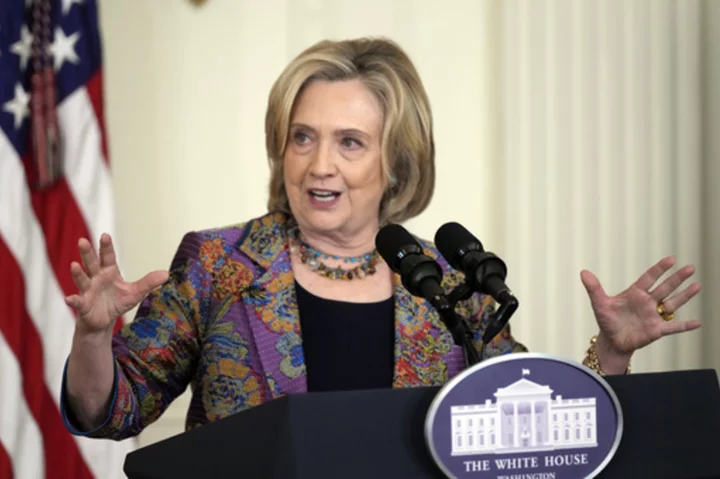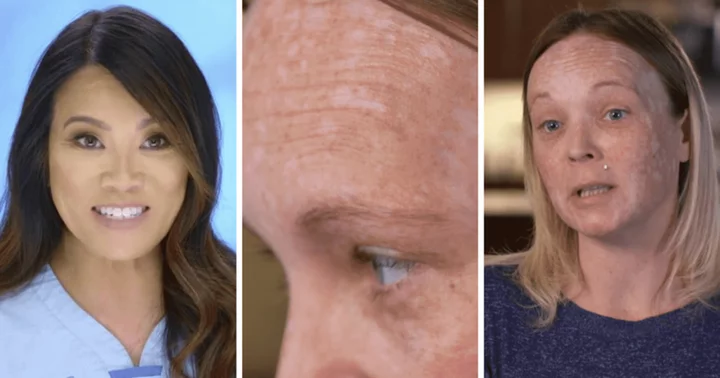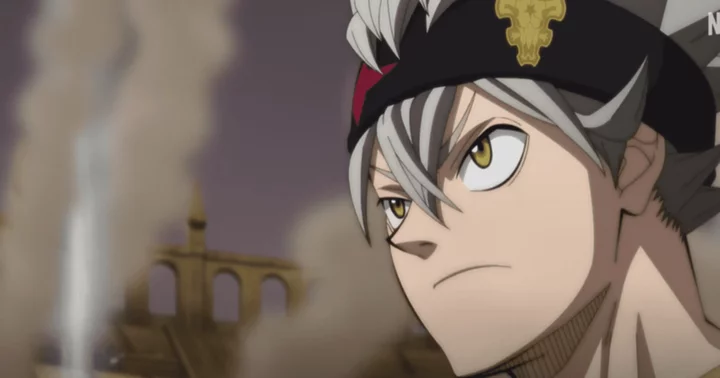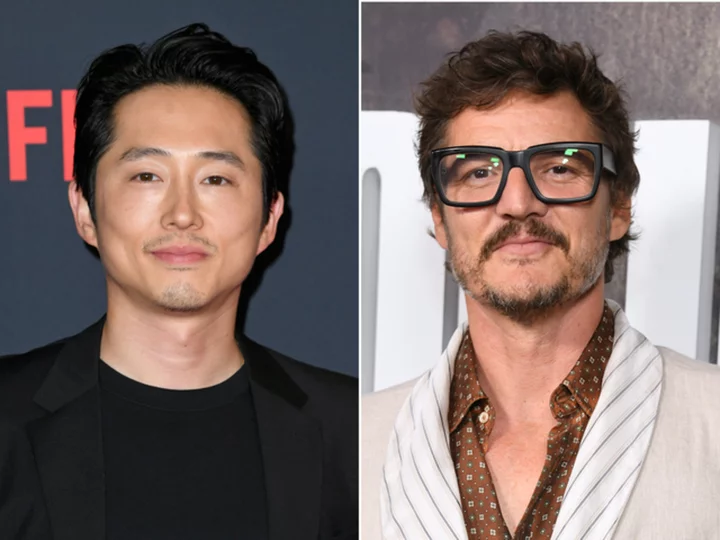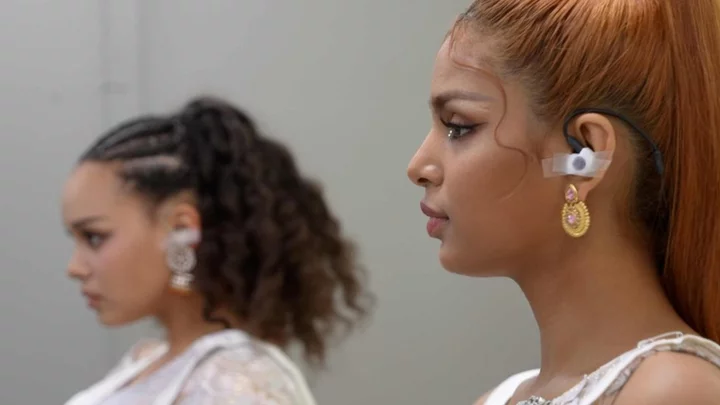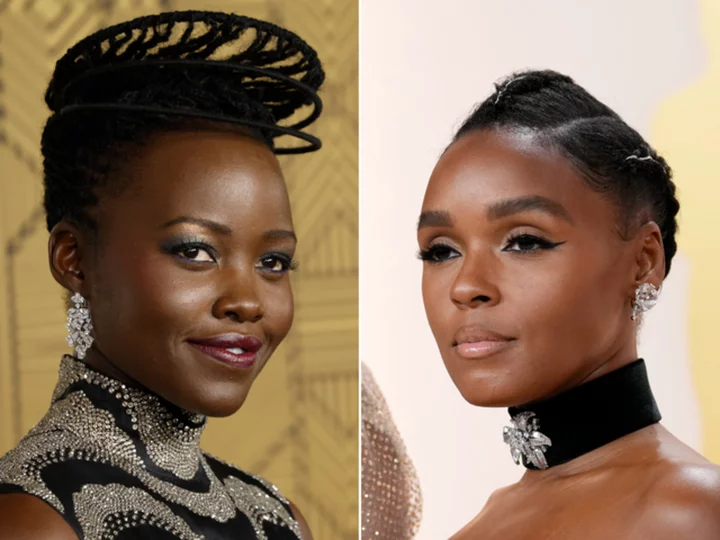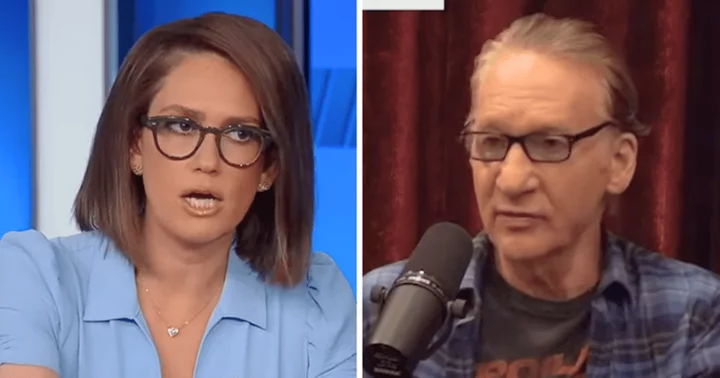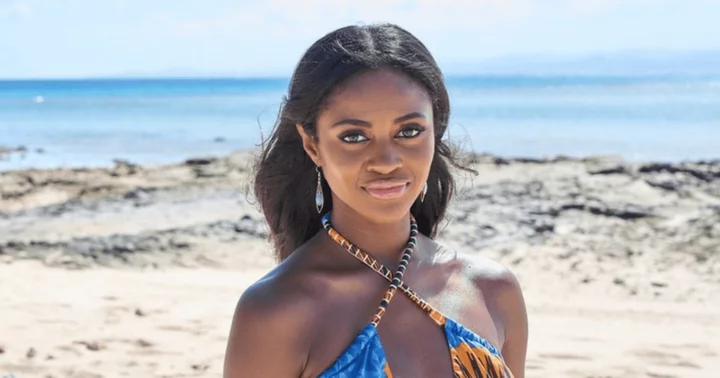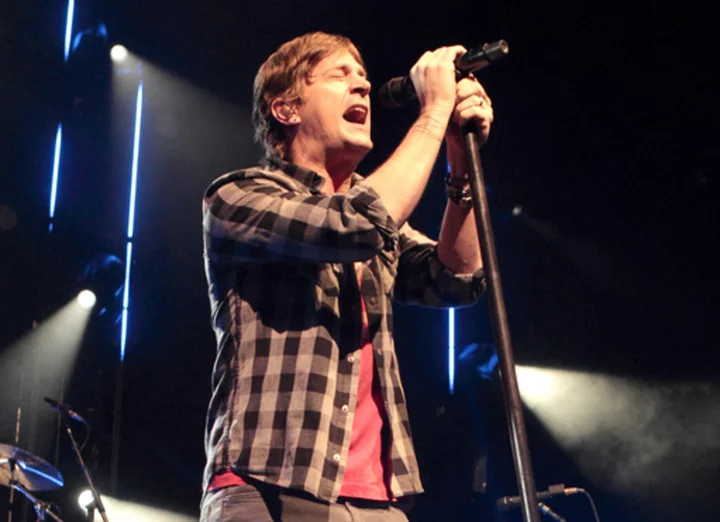WASHINGTON (AP) — During her husband’s 1992 presidential campaign, Hillary Clinton observed that “our lives are a mixture of different roles” and said most people are trying to find the right balance.
“For me, that balance is family, work and service,” she said.
Clinton juggled those roles — and more — during eight years as first lady in the White House. She returned Tuesday for her first public appearance in the building since the Obama years to indulge her love for the arts.
In her White House years, she was a wife, a mother and the nation’s hostess, but also a wronged spouse, the head of a national health care task force and on the cover of Vogue. In later years, she stepped over the White House threshold as a visiting senator and Cabinet member, but never in the long-sought role of Madam President.
Early on as first lady, she held a rare news conference where she was grilled about the Clintons' past real estate dealings, declaring that she had been “rezoned” out of her sphere of privacy.
The former first lady and current first lady Jill Biden appeared together to announce the recipients of the Praemium Imperiale, an annual global arts prize for lifetime achievement by the Japan Art Association. Both women delivered remarks. The three awardees in attendance were trumpeter Wynton Marsalis, painter Vita Celmins and theater director Robert Wilson.
Her return visit was expected to be a sentimental one.
“I have to imagine she’s really looking forward to being back and being back with the Bidens, who she’s been close to for a long time,” said Lisa Caputo, who was Clinton’s White House press secretary.
Clinton's ties to the White House bracket her time as first lady.
Early visits came when she accompanied Bill Clinton to the executive mansion, when he was Arkansas governor from the late 1970s to the early 1990s, for annual receptions for the nation’s governors.
She was a regular at the White House in her post-first lady roles as a U.S. senator and as secretary of state, a position that came with a permanent seat next to the president at Cabinet meetings.
Twice she sought the ultimate White House perch, campaigning in 2008 and again in 2016 to become the first woman elected president. She fell short each time, and kept her distance from the White House during the Trump years.
Ellen Fitzpatrick, emeritus professor of history at the University of New Hampshire, said going back to the White House evokes memories for any former first lady.
She recalled Jacqueline Kennedy’s trip back with her children years after President John F. Kennedy was assassinated. The former first lady later told President Richard Nixon in a thank you note that a day she had dreaded turned out to be one of the most precious she spent with her kids.
“I think for Hillary herself, I’m sure it will be quite a moment going back in,” said Fitzpatrick, author of “The Highest Glass Ceiling,” a book about women who run for president.
Clinton made some good and not-so-good White House memories.
“My eight years in the White House tested my faith and political beliefs, my marriage and our nation’s Constitution,” she wrote in “Living History,” her memoir. “I became a lightning rod for political and ideological battles waged over America’s future and a magnet for feelings, good or bad, about women’s choices and roles.”
In his first year in office, President Clinton stood with his wife in the East Room and made her head of a national health care task force to bring health insurance to every American. No first lady had ever been responsible for shaping such major public policy. The work, largely done in secret, inevitably attracted criticism. The plan ultimately died without a vote in Congress.
In 1994, Clinton donned a pink sweater and fielded questions for more than an hour in the East Room about her financial dealings as part of the Whitewater affair, an Arkansas real estate project the couple had lost money in and that federal authorities were investigating.
At one point during the news conference, she said, “I’ve always believed in a zone of privacy, and I told a friend the other day that I feel after resisting for a long time that I’ve been rezoned.”
Another notable White House image of the Clintons came in 1998 after the president's sexual relationship with intern Monica Lewinsky was exposed. As the family kept plans for a two-week vacation on the Massachusetts island of Martha’s Vineyard, the Clintons walked across the South Lawn to the waiting helicopter with a teenaged Chelsea as a buffer between her parents.
Hillary Clinton also was among those in the Roosevelt Room at the White House when the president declared to the nation that “I did not have sexual relations with that woman, Miss Lewinsky.” She went on national television and blamed their political problems on a “vast, right-wing conspiracy.”
Her public approval ratings ticked upward as her marital woes played out in public. She also became the first first lady to grace the cover of Vogue magazine, clad in a long-sleeved black velvet gown and seated on a red couch in the White House Red Room.
After her husband was acquitted during a Senate impeachment trial in January 1999, she ran for and won a U.S. Senate seat from New York in 2000, their final year in the White House. For a short period, she went about her duties as a freshman lawmaker while closing out her chapter as first lady.
After Clinton lost the Democratic presidential nomination to then-fellow Sen. Barack Obama in 2008, he persuaded her to become his secretary of state. She again was a regular presence at the White House, with a seat next to Obama at the Cabinet table. She's prominent in the famous photo of officials crowded into the Situation Room when Osama bin Laden was killed in 2011.
Tuesday was a full-circle moment of sorts for Hillary Clinton. She and President Clinton first celebrated the Praemium Imperiale prizes at the White House in 1994. She is the U.S international adviser for the awards.
Melanne Verveer, who was Hillary Clinton’s chief of staff at the White House, said Clinton's love for the arts is a lesser-known piece of her biography as a globe-trotting policy wonk and diplomat.
The White House was “a place of enormous artistic welcoming” under Hillary Clinton, Verveer said, adding that she was keenly interested in the National Endowment for the Arts and the National Endowment for the Humanities, federal agencies whose funding conservatives wanted to cut. She also showcased American sculpture in the first lady's garden at the White House.
“It was just a huge engagement on the arts, so I’m not surprised in some ways that the Praemium Imperiale is going to take place at the White House with her being there," Verveer said.
Even before Tuesday's visit, Clinton had an enduring presence at the White House: Her portrait as first lady hangs in a hallway on the ground floor.

